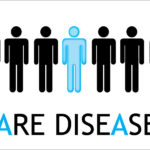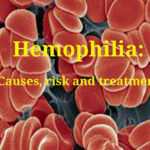Takeda India stands united for Hemophilia . Approximately 21,000 hemophilic patients registered in India. With the ongoing government support, standards of care have improved in the country.


Koki Sato, General Manager, Takeda India, commented, “As a company, we are committed to serving patients suffering from Hemophilia and support them in their journey to ensure an improved quality of life. Together with the hematology community, we are raising expectations for the future, including earlier diagnosis, earlier and full protection against bleeds, and more personalized patient care. With our innovative therapies, awareness drives, and initiatives, we aim to contribute towards building a bleed free India by 2030.”
Through Access to Medicine (AtM) strategy, Takeda aims to address the broader structural barriers that prevent patients in underserved communities from receiving the care and treatment they deserve. In addition to AtM, Takeda India in 2017, launched PurnaSamparq, a patient support program to address the critical unmet needs of Hemophilic patients by offering them Counselling, Diagnostic, Physiotherapy, Nursing and Education Support under the guidance of the Consulting Physician to improve the quality of life.
Gopal Agrawal, Head Market Access, Patient Advocacy, and Patient Services, Takeda India, said “We are committed to addressing the unmet needs of patients wherever they may be, and sustainably strengthening local health systems at every stage of the patient journey. We complement this approach with a commitment towards developing an end-to-end access approach to make our highly-innovative medicines available as soon as practically possible”.
Hemophilia is an inherited single gene disorder that is usually inherited, and about one in every 5,000 males is born with the disorder[2]. As per a reputed patient body in the country, there are approximately 21,000 registered hemophilia patients in India (footnote source). This rare disease mostly impacts pediatric males. While most of the patients opt for on-demand treatment when an episode of bleed occurs, there is prophylaxis treatment that can reduce the annual bleed rate, therefore leading to a reduced lifetime risk of future bleeds and helping the patients to live a better-quality life.
[1] http://www1.wfh.org/publications/files/pdf-1731.pdf.
[2] https://www.hemophilia.in/index.php/hemophilia/about-hemophilia
For more information: https://www.takeda.com













